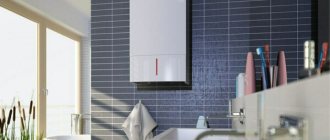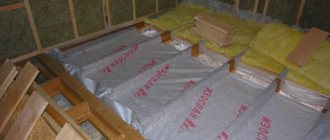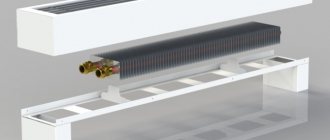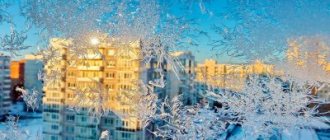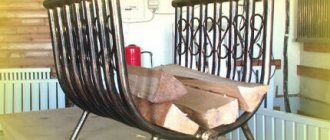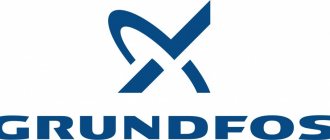A comfortable microclimate in the house has always been the merit primarily of the insulating materials used. We are talking about insulation, sound insulation, films, protective membranes and additional accessories. All this is designed to keep the living quarters warm, protect from rain outside and water vapor from the inside.
And every year, leading companies work to improve the protective properties of their products and make it easier to work with during the installation process. And the most famous products on the Russian market of insulating materials are Izospan. Let's look at its advantages and types, as well as what the letters A, B, C, D and F mean in the marking of rolls. The main thing is not to get confused!
A little about the manufacturer: why does everyone know about it?
Gexa company is one of the largest manufacturers of nonwoven materials for building insulation. The company itself is relatively young, operating since 1998 and began as a small family company. Today, Gex already employs more than 2,000 employees, and even has its own representative offices in neighboring countries.
Thanks to the availability and thoughtfulness of its products, Hexa quickly captured a large part of the market for similar products, while also developing geosynthetics for road construction and a stable production of disposable clothing for medical workers. Today there are about 15 of its representative offices in Russia.
By the way, Izospan is one of the very first brands of insulation produced domestically. Among builders, all these films and membranes are so well known that they have already received a household name. True, today the company has to actively fight against mass counterfeiting of its films, which differ in quality for the worse and spoil the entire impression of the brand.
Also, Izospan films are well known among the population due to the fact that they are always available. This is a credit to Hex's logistics system. But sometimes you have to look for other brands all over the city; you’re probably familiar with this situation.
In addition, Izospan is constantly working to improve its product; for example, it recently released a three-layer moisture-windproofing membrane with an anti-condensation coating. Another interesting new product is heat-saving insulation based on kraft paper with lamination with metallized lavsan, which we will talk about later.
Quality and range: everything to protect your home
In total, the Izospan line of insulating products has an assortment that is conventionally divided into 4 groups:
- windproof waterproofing vapor-permeable membranes;
- waterproof vapor barrier films;
- universal materials that work in several directions at once;
- heat-steam-waterproofing materials with additional energy-saving effects.
Here is an explanatory illustration of how exactly all these materials differ:
A roofing pie with films from Izospan looks like this:
Series A are windproof materials, and series B, C and D are hydro-vapor barrier membranes. If you are afraid of getting confused in abbreviations, remember a simple rule: the first letter means the insulation class, and the second means the modification.
If there is no second letter, then the material is classic, without additional frills:
Plus Izospan produces a special tape designed specifically for this product:
This manufacturer also produces special waterproofing materials for flat inversion roofs. The company itself always boasts that it creates all its products in automated production facilities.
And this is evidence that technical control is constantly being exercised over the quality of products. This cannot be achieved with any kind of handicraft production.
The procedure for installing slabs with laying vapor barrier, insulation and waterproofing
Installation of an insulation system always begins with the preparation of the facade - cleaning, dismantling protruding communications and ebbs, repairing damaged areas.
- A vapor barrier film is spread over the prepared surface, at the same time securing it with staples to the wall, gluing with tape the joints of the panels and the edges.
- The supporting frame is built.
- An insulating board is placed between the frame posts and secured with dowel screws.
- The diffusion membrane is spread, secured with a stapler, the seams and edges are taped with double-sided tape.
- Install a counter rail for fastening siding panels.
- The curtain façade is being installed.
- Installation of siding is carried out from the bottom up, starting with corner, connecting and base strips and framing of window and door openings. The siding panels are inserted into the grooves of the left panel and snapped onto the connecting strip of the bottom panel. Lastly, the finishing panel is attached under the eaves soffit.
External protection of house structures from wind and rain: Izospan A
All films of group A protect insulation and roofing elements from the negative effects of the external environment, and all others protect both external and internal at the same time.
Here we are talking about a wind-moisture-proof membrane that protects the insulation from rain, snow and wind. At the same time, this membrane also removes condensation from the fleecy side. Such films are fixed to mineral wool or polystyrene foam from the outside.
As for newer modifications, Izospan AM and AQ are made of three-layer film, which makes it possible to increase the level of protection of buildings. Also in group “A” there are separate options that are resistant to high temperatures and fires.
Let's take a closer look at the tasks for which Izospan A films are used and what their technical characteristics and properties are:
Izospan AQ Proff
So, the waterproof hydro-windproof membrane Izospan AQ Proff is vapor-permeable and is designed to protect the insulation and roof structure from environmental influences. Namely, from moisture from rain.
Why vapor permeable? The fact is that such a membrane must remove water vapor from the insulation directly into the atmosphere. If it begins to interfere with these vapors, then moisture will begin to linger in the insulation itself and mold will develop.
But at the same time, on the other hand, waterproofing must have a certain water resistance. In a word, on one side it allows water to pass through, but on the other it does not. Izospan suggests using the professional three-layer superdiffusion membrane Izospan AQ Proff for these purposes:
By the way, all Izospan films marked Proff have special markings in the form of a grid with 10x10 cm cells. This is specially made for easy installation; dashed lines along the edges of the film indicate the overlap line. For example, vertical lines are applied in 1 meter increments, making the film easy to cut without first measuring with a tape measure.
Izospan AQ Proff is laid directly on the insulation, without leaving any special ventilation gaps, thereby saving on the installation of sheathing.
This membrane also has excellent light resistance, making it suitable for installation as a temporary roof. It is also highly durable, which allows installation in any weather, even in strong winds.
Izospan AM: protection against heat loss
Izospan AM is a vapor-permeable material that removes water vapor from the insulation directly into the ventilated gap. At the same time, it remarkably protects the thermal insulation from precipitation that accidentally gets under the roofing, as well as condensation:
The film of this brand has high resistance to mechanical loads. Additionally, it serves as a wind barrier, preventing air from passing through the thermal insulation. This, in turn, significantly reduces heat loss.
Izospan AS: as many as three layers
The Izospan AS membrane has two important functions: windproof and moisture-proof. It simultaneously protects both the thermal insulation layer and other roofing elements. To do this, the membrane has three internal layers, each of which was developed for its specific task.
Unlike other films, this membrane can be laid directly on thermal insulation, without a special gap for ventilation. To some extent, this simplifies and reduces the cost of the very design of the roofing pie.
It is also suitable as a component for insulating floors and facades, and lasts for 50 years (as the manufacturer claims):
But remember that the entire Izospan AS line is always installed only on the outer side of the insulation directly under the finishing roofing covering.
Installation of attic floors
It is important to use the right materials for arranging attic floors, choosing them depending on the operating conditions and purpose of use:
- If it is necessary to protect the heat insulator in the ceiling between a heated room and an uninsulated attic from weathering and moisture, and to ensure the removal of vapors from it, AQ proff, AM or AS membranes are used. The sheets should be laid with the white side facing the heat insulator, close to each other, without gaps.
- A vapor barrier layer, which simultaneously protects against insulation particles entering the air, is installed on the side of the living room. Film grade B, RS, C or DM should be laid between the sub-ceiling and the finishing. The rough side should be facing down. It is advisable to provide a ventilation gap (40–50 mm) between the sub-ceiling and the vapor barrier.
The vapor barrier on the room side of the rough ceiling can be mounted from foil materials. The reflective layer should face down. A gap of 40–50 mm should be left between it and the finishing material.
All types of canvases are laid with an overlap of 15–20 cm, the joints and junctions are glued with mounting tapes appropriate to the material.
Description of materials Izospan allows you to understand the types of membranes and films, understand how to choose and how to install vapor and waterproofing.
Based on materials from the site: vseokrovle.com
Line of vapor barrier materials: Izospan B
Izospan B is a vapor barrier with universal properties, suitable for any task and any room (except perhaps for saunas, they have their own line). This film perfectly protects walls from water vapor and can withstand temperatures from -60 to +80 degrees. One of its sides is rough, designed to hold condensation and slowly evaporate it.
It is made from polypropylene non-woven fabric and another additional polypropylene film. These two materials are securely glued together and never delaminate.
By the way, it is with this type of film that most questions arise about which side to mount Izospan on: rough or smooth? Indeed, there is a difference. But you can easily find the right side by touch, don't worry.
Additionally, this film prevents the penetration of small volatile insulation fibers directly into wall or roof structures. This is extremely important, especially if mineral wool insulation was used. In simple terms, in order not to breathe “prickly” air in a cozy attic:
Working with this material is not difficult, because... With Izospan B films there are always detailed instructions for use and calculation of the material.
But the slightly improved Izospan B Fix has special adhesive tapes directly on the film.
Some installation tips
Installing an isospan with your own hands is often not difficult even for beginners; in general terms, the instructions look something like this:
- The roll is rolled out at the installation site and fixed to the base. The membrane is “targeted” to wooden slats using a conventional construction stapler or nailed with planks;
- The film is often glued to concrete and other hard surfaces with some kind of polymer adhesive, for example, “Liquid Nails”;
- Installation proceeds from the bottom up and each subsequent strip is laid with an overlap of 100–150 mm on the previous one;
- In order to ensure a single, unbroken fabric, the membrane joints must be glued on the front side with a special adhesive tape, and for each direction of isospan there is a different type of adhesive tape.
Often, installation of membranes does not cause difficulties.
Beginners have problems determining the side of the isospan installation, so here it is:
- In vapor-permeable films, the rough side is always vapor-permeable, and the smooth side is waterproofed. In other words, if you are covering the insulation, then the rough side should be facing the insulation or concrete (if these are floors);
- Foil always “looks” inside the room;
- Brands starting with the letter “A” are often two-color, so the light side should be facing the insulation.
Two sides of one film: Izospan S
Izospan S is another type of hydro-vapor barrier. It differs from simple films primarily in that it also has a double structure - smooth on the inside and rough on the outside.
This film is also denser and more durable, and therefore suitable not only as a vapor barrier, but even as additional insulation. And its rough part is attached inside the building.
It is recommended to fix such a vapor barrier to the roof using galvanized nails:
Izospan C is also often used as a waterproofing agent during the installation of cement floor screeds in rooms with high air humidity.
How not to step on a rake
Mostly people are satisfied with the quality of this product, but sometimes sharply negative reviews appear on the forums. As practice has shown, such people often bought a fake. In order to protect you from such a mistake, the photo below shows the reference points by which you can find the real “Izospan”.
How to recognize a counterfeit roll of isospan.
For non-insulated roofs: Izospan D
The next type is Izospan D. These are materials based on polypropylene fiber, even more durable and reliable. They are even allowed to be used as shelter for up to four months. But, first of all, Izospan D serves as a vapor barrier for wooden roofs and cold walls. Sometimes it is also used as a layer for cement screed, like Izospan S. This is what this insulation looks like on the spread:
Let's make a short digression that will explain to you why all these details are so important, and why there are so many types of all these films, although it was possible to release one universal one. The quality of the vapor barrier directly affects the service life of both the roof and the house itself. That is why experts always advise giving preference to materials only from a well-known manufacturer who is concerned about its reputation.
After all, even with high-quality material it is usually difficult to create an absolutely sealed insulating layer, let alone thin and short-lived films. And during its operation, the insulation, if it begins to accumulate moisture, will quickly lose all its properties, thereby nullifying all efforts to construct the walls and roof.
Just imagine for a moment that you spent a lot of time and money on building a house, and within six months you began to notice the smell of mold. This is very very bad.
Another common problem is the leakage of the vapor barrier layer at the joints. Namely, poorly glued sheets. To solve precisely this problem, the Hexa company began to produce new products in 2022 - Izospan B Fix and Izospan D Fix.
Their difference from previous products is that there is already special adhesive hair pre-applied to the canvas. They not only facilitate the installation process itself, but also truly ensure reliable fastening of the canvases to each other.
When working with such material, you no longer need to worry that the construction tape will touch this particular area, pull and tear off a piece, or lie unevenly, or simply turn out to be of poor quality and easily peel off.
By the way, the D line also has a subtype - DM, films with a special anti-condensation coating that perfectly retains random droplets of moisture:
Why is vapor barrier needed?
It is important not only to know which side to put Izospan on, but also why it is important in use. It’s very simple - inside any premises moisture gradually accumulates and escapes through the ceilings. In cold weather, steam turns into condensation, which settles on structures and gradually destroys materials, and mold begins to develop. Using a vapor barrier will help get rid of such problems. The film must be laid correctly, otherwise it will not give the desired result.
Among all protection options, the domestic Izospan is especially popular and of high quality. It is made from special materials that give it a number of properties, the main ones being durability and high strength. The canvases have certain sizes that ensure the simplest possible installation. At the moment, there are no analogues for this film; it is one of the best, performs all the functions assigned to it and has an affordable price.
Laying Izospan Source buildhome.semtex.ru

